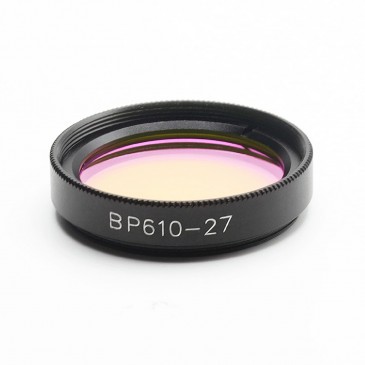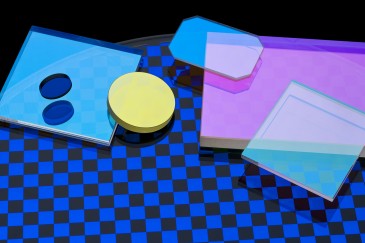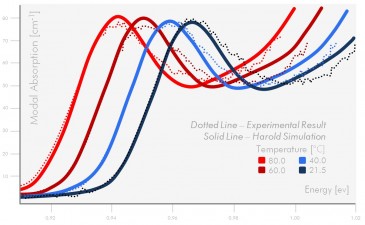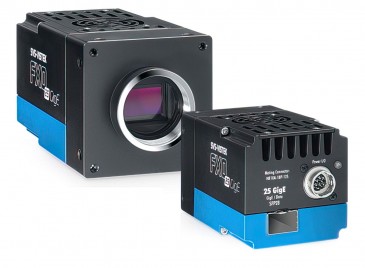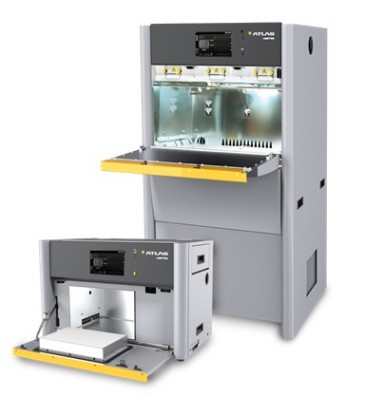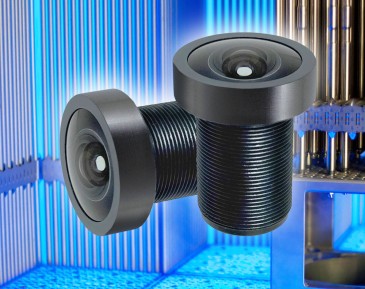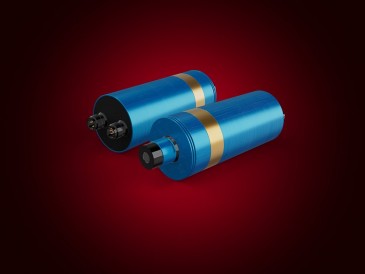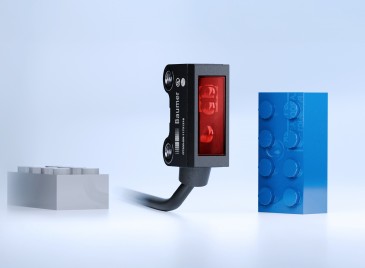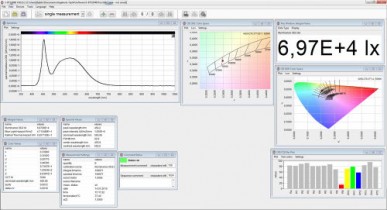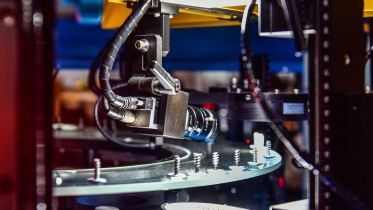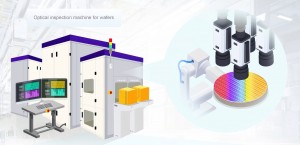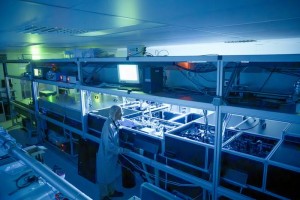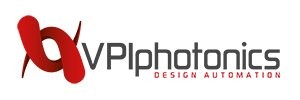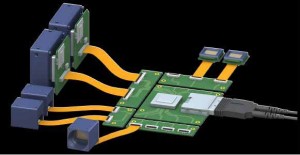
Frame grabber boards have been widely deployed by designers of industrial vision systems to enable image frames to be captured from either digital or analog video cameras.
Many of today’s contemporary frame grabbers allow such image data to be transferred from a camera to a PC over a variety of industry standard interfaces such as CoaXPress, Camera Link, HD-SDI, SDI and LVDS. Once there, the data can be transferred over a PCI Express (PCIe) bus into PC memory where it can be displayed, stored or transmitted.
Direct streaming
At the Vision 2016 show in Stuttgart, however, XIMEA was demonstrating a series of cameras that can stream directly to the memory of a host computer, or into the memory of a graphics processing unit, without the need for a dedicated frame grabber.
To do so, the XIMEA engineering team decided to redeploy the PCIe bus as a means of transferring data from a camera to a host. More commonly used as a high-speed serial computer expansion bus standard, the PCIe was originally developed to replace older PCI, PCI-X, and AGP bus standards.
To support the concept, XIMEA has developed a series of cameras and supporting peripherals. According to the company, its so-called xiB and xiB-64 camera families stream images to the host computer via four or eight lanes over either a PCI Express (PCIe) Generation 2 or a Generation 3 bus, each running at 5.0GTransfers/sec PCIe (Gen2) or 8.0GTransfers/sec PCIe (Gen3).
For their part, the company’s xiB cameras - which are based on CMOSIS 12Mpixel, 20 MPixel, and 50MPixel sensors - all stream images to the host computer via the PCIe Gen2 bus. The current PCIe x4 Gen2 design, shown at the Vision show in Stuttgart, can transfer 50Mpixel images up to 20frames/sec in 12bit mode. In 10bit mode, it can reach up to the maximum sensor speed of 30frames/sec.
The xiB-64 cameras based on PCIe x8 Gen3 interface, on the other hand, boast 64Gbit/sec sustainable transfer rate. The PCIe x8 Gen3 implementation is able to transfer the maximum frame rate of 30 frames/sec from the 50Mpixel imager in 12 bit mode.
According to Max Larin, the CEO of XIMEA, the high resolution Generation 2 PCIe cameras are all available today, and the higher speed, Generation 3 PCIe cameras models can either be made to order or planned for release in 2017.
Supporting hot swapping
PCIe hot swapping could theoretically be supported by the cameras. However, a major part of hot swap support must be implemented on the PC hardware, and because XIMEA does not have access to its customer's hardware, the company cannot generally claim that hot swapping is supported. Having said that, XIMEA will co-operate with its customers to implement such a solution should the need arise.
Mr. Larin added that there are two means that system integrators can currently use to interface the cameras into their systems. The first option is to use copper cabling which enables a camera to be located up to seven meters from the host. The second -- a somewhat more expensive fiber optic alternative -- enables developers to deploy the XIMEA cameras one hundred meters from their PC.
Certainly, there appear to be some advantages to using the PCIe as a camera interface, not the least of which is that PCIe is a scalable interface allowing multiple cameras to be aggregated to a single high bandwidth link by the means of a PCIe switch. For example, four PCIe x4 Gen2 xiB cameras can be aggregated to a single PCIe x8 Gen3 link carrying data streams to the host computer over a single copper or optical cable without limiting the bandwidth of the individual cameras.
XiSwitch--a PCIe switch board
To enable design engineers to use this capability, XIMEA has developed what it calls the XiSwitch, a technology demonstration PCIe switch board. This allows developers to connect and aggregate data from numerous cameras with a range of sensor resolutions and frame rates to a PC through via copper, flat-flex or optical connector types.
Despite the fact that the new XIMEA cameras are touted as a solution that obfuscates the need for a frame grabber, it might be argued that the developers have simply integrated the frame grabber into the camera, since each of the cameras uses a large memory buffer -- 140Mbytes in the case of the xiB-64 cameras. What is more, the system still requires the use of an interface board that must be inserted into the PCIe slot of the host computer to interface the cameras to the internal PCIe bus of the computer.
Advantages and disadvantages
Clearly, using the PCIe bus as a camera-to-host interface does offer some advantages in terms of speed. At a transfer speed of 64Gbit/sec, some might consider the interface represents a challenge to the CoaXPress digital interface standard. The CoaXPress standard, for example, allows the transmission of high speed data from a camera to a host such as a frame grabber in a PC at a speed of up to 25 Gbits/sec if all four channels of the interface are deployed.
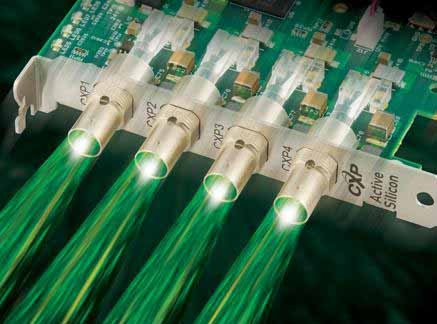
Many applications, particularly in the medical industry, require long-term stability and exporting the current PC bus to the camera may not achieve that goal. A benefit of using frame grabbers based on established connectivity standards such as CoaXPress (shown here) is that they insulate the camera from the rapidly changing PC market.
According to Marc Damhaut, the Chief Executive Officer of Euresys, a significant advantage of the CoaXPress interface, however, is its use of a low-cost coaxial cable that is able to carry data (in both directions) and supply power to the camera over up to 40 meters. Flexible, robotics-grade CoaXPress cables as well as ruggedized connectors are also available. Other interfaces, he says, are all about compromise --either the length of the interface is limited to a few meters, or fragile fiber optic cabling and connectors must be used with no power supply.
Regarding the bandwidth issue, he says that CoaXPress cameras with eight connections can already reach a transfer rate of 50 Gbits/sec, and next year, the same transfer rate will be available with just four cables.
One other notable disadvantage of the XIMEA approach is that, at present, at least, it is supported by only a few vendors such as Russian software developer FastVideo and IDT Vision. Hence, systems integrators who need to mix and match cameras and frame grabbers in industrial applications might be hesitant to adopt such an approach.
Donal Waide, the Director of Sales at CoaXPress frame grabber manufacturer BitFlow agrees. He said that for a new interface/design to truly catch fire, it must be adopted by several companies. Indeed, Waide claims that the number of companies with CoaXPress products is closing in rapidly on the 50 mark, giving the customer options. A unique solution, on the other hand, he adds, ties a customer down and can cost them in terms of design options, monopolized pricing and lead times from a single company.
A further benefit with established connectivity standards such as GigE, USB 3.0, CoaXPress and Camera Link (and the associated interface card for those standards) is that they insulate the camera from the rapidly changing PC market.
According to Colin Pearce, the Chief Executive Officer of CoaXPress frame grabber maker Active Silicon, many applications, particularly those in the medical industry, require long-term stability and exporting the current PC bus to the camera is not going to achieve that goal. This, he says, is a point best illustrated by XIMEA’s launch of the same technology concept using Thunderbolt at an earlier trade show. Whilst Thunderbolt is still surviving, he adds, its future is somewhat uncertain.
Stepping outside the traditional MV industry
But the new XIMEA concept does appear to be reaching some markets, albeit those outside the traditional machine vision industry. Mr. Larin says that there is a lot of interest in the cinematography and video game fields where multiple camera heads need to be placed in close proximity, for example, such as capturing 360 panoramas. System integrators such as Lytro, for example, are now using the system to combine and aggregate the data streams from cameras with various resolutions to achieve some exciting results.
Written by Dave Wilson, Senior Editor, Novus Light Technologies Today
































 Back to Features
Back to Features